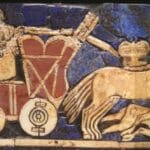We all love a good hero story, don’t we? Someone who stands for good, achieves the impossible, or saves the day. But what happens when those bright stars fall from the sky? History is packed with tales of incredible individuals who started as heroes—innovators, saviors, champions—only for their stories to take a dark, unexpected turn. It’s a chilling reminder that the path from admired to infamous can be alarmingly short. Join us as we delve into 10 astounding stories of figures who began as heroes but ended up as villains in the eyes of many.
10. Henry Heimlich
Dr. Henry Heimlich gave the world a life-saving gift: the Heimlich maneuver. This simple technique has rescued countless people from choking. Choking is a terrifying experience, a silent threat that tragically claims thousands of lives each year. For this invention, Heimlich was rightly hailed as a hero, responsible for saving an untold number of lives worldwide.
But Heimlich’s story takes a troubling turn. He controversially pushed for his maneuver to be used on drowning victims, a practice that proved harmful and lacked scientific backing. He also championed malaria therapy for conditions like HIV and cancer, drawing further strong criticism from the medical community. These actions cast such a shadow that his life-saving technique is often now just called an “abdominal thrust,” a bitter twist in a once-heroic legacy.
9. Philippe Pétain
Marshal Philippe Pétain was once a towering figure in French history. Celebrated as the “Lion of Verdun,” he was a World War I hero. His leadership was credited with stopping the German advance during the horrific Battle of Verdun, making him a symbol of French resilience and courage.
However, his heroic status crumbled dramatically during World War II. When Germany invaded France in 1940, Pétain became Chief of State of Vichy France. Instead of leading resistance, he chose collaboration with the Nazi regime. His government enacted harsh, repressive measures, including the persecution of Jewish citizens. This shocking betrayal of French values led to his conviction for treason and a death sentence after the war, which was later commuted to life imprisonment. His name became synonymous with collaboration.
8. Jim Jones
In his early days, Jim Jones was a charismatic preacher. He gained followers with messages of equality and apparent powers of healing. Commendably, he actively fought for racial integration at a time when it was deeply unpopular with many. He also established organizations aimed at helping the homeless and needy, building a reputation as a progressive social leader.
But this promising start spiraled into a horrific nightmare. Jones’s charisma morphed into a dangerous, narcissistic control. He founded the Peoples Temple and eventually led his followers to establish “Jonestown” in Guyana. There, in November 1978, he orchestrated one of history’s largest mass murder-suicides. Over 900 people, including more than 300 children, died after drinking cyanide-laced punch at his command. Jones himself died from a gunshot wound, leaving behind a legacy of unimaginable horror and manipulation.
7. Benedict Arnold
Benedict Arnold was a distinguished American military officer during the Revolutionary War. He displayed great bravery and skill in several key battles for the American Continental Army. His contributions were significant, and he rose to the rank of major general, hailed as a war hero by many patriots.
However, Arnold’s name is now forever synonymous with treason. Feeling unappreciated, resentful of other officers, and facing mounting debt, he made the shocking decision to defect to the British side. He plotted to surrender West Point to the British, a move that could have crippled the American cause. His treachery was discovered, but he escaped to Britain. His reasons remain debated—greed, ego, or a genuine belief in British rule—but his betrayal made him one of the most reviled figures in American history.
6. Richard Jewell & The Media’s Rush to Judgment
Richard Jewell’s story is a tragic case of a hero turned villain, not by his own actions, but by a rush to judgment. During the 1996 Summer Olympics in Atlanta, Jewell, a security guard, discovered a backpack containing three pipe bombs. He immediately alerted police and helped evacuate the area, saving many lives. Initially, he was hailed as a hero.
But just days later, Jewell’s life was turned upside down. He was named as a suspect by the FBI, and the media pounced. He was portrayed as a lone bomber, his character and appearance relentlessly attacked. Though he was eventually cleared of all charges—the real bomber was Eric Rudolph—the damage to his reputation was immense. Jewell was a hero who suffered greatly because the media and, initially, law enforcement cast him as the villain.
5. Harry Harlow
Harry Harlow was an American psychologist whose early work shed important light on the importance of love and affection in childhood development. At a time when many believed affection was merely sentimental, Harlow conducted experiments with rhesus monkeys. His research demonstrated the critical role of maternal bonding and comfort for healthy psychological development, showing the devastating effects of deprivation.
However, Harlow’s methods were controversial from the start, and his later work took an even darker turn, particularly after his wife’s death. He created devices like the “pit of despair” to induce depression in monkeys and conducted experiments on social isolation that were widely condemned as cruel and unethical. While his initial findings were significant, his legacy is deeply stained by the extreme suffering inflicted on his animal subjects, making him a villain in the eyes of animal welfare advocates and many ethicists.
4. Linus Pauling
Linus Pauling was a towering figure in science, one of the few people to win Nobel Prizes in two different fields: Chemistry and Peace. He made groundbreaking contributions to understanding chemical bonds and molecular structure. His early work was undeniably heroic for science.
However, later in his career, Pauling became an ardent advocate for megadoses of Vitamin C. He claimed it could prevent and treat the common cold, cancer, and other diseases. Despite a lack of robust scientific evidence and criticism from the medical community, Pauling staunchly promoted his views. His immense reputation lent credibility to these claims, potentially misleading many and fostering a distrust of mainstream medicine. While not malicious, his unyielding insistence on unproven theories tarnished his scientific legacy for some, portraying him as someone who strayed from rigorous science into pseudoscience.
3. Fritz Haber
Fritz Haber was a brilliant German chemist whose work had a profound, dual impact on the world. On the one hand, he co-invented the Haber-Bosch process. This revolutionary method for synthesizing ammonia allowed for the large-scale production of fertilizers, dramatically increasing food production and sustaining billions of lives. For this, he won the Nobel Prize in Chemistry.
However, Haber also applied his genius to warfare. During World War I, he spearheaded Germany’s chemical weapons program. He oversaw the development and deployment of chlorine gas and other deadly agents on the battlefield, earning him the title “father of chemical warfare.” This horrific innovation caused immense suffering and ushered in a new era of brutal conflict. His wife, also a chemist, took her own life, reportedly in protest of his work. Haber’s legacy is thus deeply conflicted: a savior of lives through agriculture, and a destroyer of lives through chemical warfare.
2. Charles Lindbergh
Charles Lindbergh soared into global fame as an American hero in 1927. He completed the first solo, non-stop transatlantic flight from New York to Paris in his plane, the Spirit of St. Louis. This incredible feat of courage and skill made him an instant icon, admired worldwide for his daring spirit.
But Lindbergh’s heroic image began to tarnish in the years leading up to World War II. He became a prominent voice in the America First Committee, arguing against U.S. involvement in the war. His speeches included troubling anti-Semitic remarks, suggesting that American Jews were pushing the country into war. He also accepted a medal from Nazi Germany. These actions led many to label him a Nazi sympathizer, and his reputation never fully recovered from this dark chapter, casting a long shadow over his earlier aeronautical achievements.
1. Charles Romley Alder Wright
Charles Romley Alder Wright was an English chemistry and physics researcher. He was a founding member of the Royal Institute of Chemistry. In the late 19th century, he conducted experiments with morphine, hoping to find a non-addictive alternative that could still offer pain relief. His intentions were seemingly good, aiming to improve upon existing medicines.
However, in 1874, while boiling morphine with acetic anhydride, Wright synthesized diacetylmorphine. This compound was later marketed by Bayer as a cough suppressant and pain reliever under the brand name “Heroin.” Initially, it was even promoted as a non-addictive substitute for morphine. Of course, we now know heroin is incredibly potent and one of the most addictive and destructive drugs in the world. Though Wright didn’t foresee its devastating impact, his scientific discovery inadvertently unleashed a substance that has caused immense suffering and countless ruined lives.
The journeys of these ten individuals are a stark reminder of life’s complexities. They show that heroism can be fragile and that even those who accomplish great good can succumb to darker paths. Whether driven by ambition, flawed ideas, personal demons, or the harsh judgment of history, their stories are cautionary tales. They teach us that the line between a celebrated hero and a vilified figure is often thinner and more blurred than we’d like to believe.
What do you think about these transformations from hero to villain? Are there other figures who fit this pattern? Share your thoughts in the comments below!










